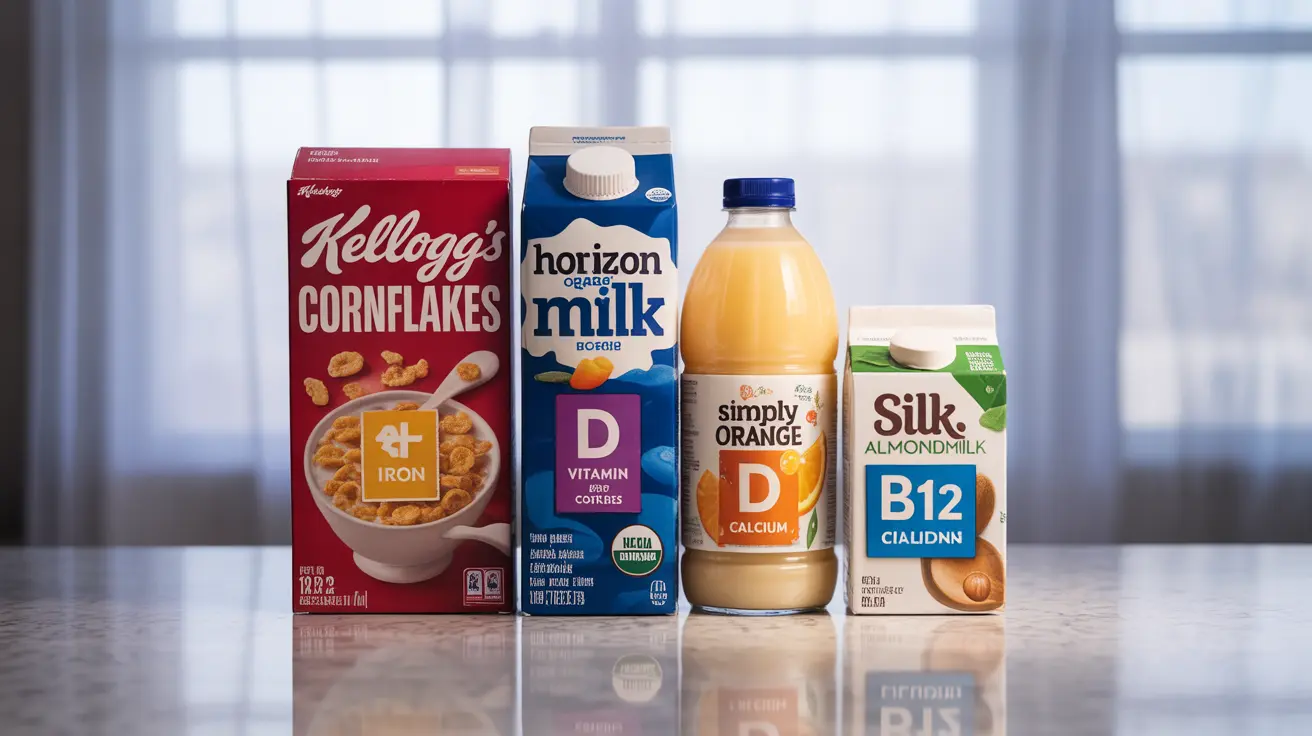In today's world of diverse nutritional needs and dietary challenges, fortified foods play a crucial role in helping people meet their essential nutrient requirements. These specially enhanced foods have become an integral part of modern nutrition, offering a practical solution to common nutrient deficiencies while supporting public health initiatives worldwide.
Whether you're following a specific diet or simply trying to maintain optimal health, understanding fortified foods can help you make informed decisions about your nutrition. Let's explore what these foods are, their benefits, and how they can fit into a healthy diet.
What Makes Foods Fortified?
Fortified foods are everyday products that manufacturers have intentionally enhanced with specific nutrients to improve their nutritional value. This process differs from natural food sources, where nutrients occur naturally, and involves adding vitamins, minerals, or other beneficial compounds during production.
- Breakfast cereals with added iron and B vitamins
- Milk fortified with vitamin D
- Orange juice with added calcium
- Plant-based milk alternatives with vitamin B12
- Salt with added iodine
The Difference Between Fortified and Enriched Foods
While often used interchangeably, fortification and enrichment are distinct processes. Fortification involves adding nutrients that weren't originally present in the food. Enrichment, however, refers to replacing nutrients lost during food processing, such as adding B vitamins back to refined grains.
Key Benefits of Fortified Foods
Fortified foods offer several important advantages for public health and individual wellness:
Population-Wide Benefits
- Prevention of widespread nutrient deficiencies
- Improved maternal and child health
- Enhanced cognitive development in children
- Reduced risk of certain birth defects
- Better overall public health outcomes
Individual Health Advantages
- Easier access to essential nutrients
- Support for special dietary needs
- Enhanced nutrient absorption
- Convenient nutrition for busy lifestyles
- Cost-effective nutrient supplementation
Common Nutrients Added to Fortified Foods
Manufacturers typically fortify foods with these essential nutrients:
- Vitamin D: Added to milk and dairy products
- Calcium: Found in juices and plant-based milk
- Iron: Added to cereals and grain products
- Folic Acid: Present in bread and pasta
- Vitamin B12: Added to plant-based products
- Omega-3 fatty acids: Found in fortified eggs and milk
Safety and Daily Consumption
While fortified foods are generally safe for daily consumption, it's important to understand their role in your diet. They should complement, not replace, a balanced diet rich in whole foods. Pay attention to serving sizes and daily recommended values to avoid excessive intake of certain nutrients.
Special Dietary Considerations
Fortified foods are particularly valuable for certain groups:
- Vegetarians and vegans can benefit from B12-fortified foods
- People with lactose intolerance can get calcium from fortified alternatives
- Pregnant women can ensure adequate folic acid intake
- Older adults can maintain vitamin D levels
- Children can receive essential nutrients for growth and development
Frequently Asked Questions
What are fortified foods and how do they differ from enriched foods? Fortified foods contain added nutrients that weren't originally present, while enriched foods have nutrients restored that were lost during processing. For example, milk fortified with vitamin D is different from refined flour enriched with B vitamins that were removed during milling.
What are the main health benefits of eating fortified foods? Fortified foods help prevent nutrient deficiencies, support overall health, and provide essential vitamins and minerals that might be difficult to obtain through regular diet alone. They're particularly beneficial for public health and specific populations with increased nutrient needs.
Which nutrients are commonly added to fortified foods and why? Common nutrients include vitamin D, calcium, iron, folic acid, and B vitamins. These are added because they address common deficiencies, support essential body functions, and may be difficult to obtain in sufficient quantities through regular diet alone.
Are fortified foods safe to eat every day, and can they replace a balanced diet? Fortified foods are safe for daily consumption but shouldn't replace a balanced diet. They should be viewed as a supplement to, not a replacement for, whole foods. Monitoring portion sizes helps prevent excessive nutrient intake.
How do fortified foods help people with restricted diets like vegetarians or lactose intolerance? Fortified foods provide essential nutrients that might be lacking in restricted diets. For example, vegetarians can get B12 from fortified plant-based products, while those with lactose intolerance can obtain calcium from fortified non-dairy alternatives.




